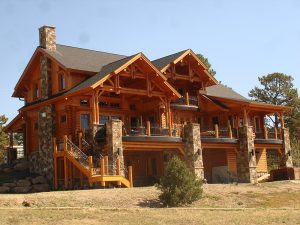There has been a lot of talk lately about the new 2009 International Building Codes and specifically, the Residential component of that family of codes that are released this year and will start to become adopted in jurisdictions across the country.
From the ICC website, the key changes are as follows (there are a multitude of other changes in the code, but these are the most prominent) :
New safety features in the 2009 IRC include:
- Fire sprinklers required in all new one- and two-family residences beginning Jan. 1, 2011.
- Fire sprinklers in all new townhomes when the code is adopted.
- Carbon monoxide alarms required in new construction dwelling units with fuel-fired appliances, and in existing homes where interior alterations include fuel-fired appliance replacements or attached garages.
- New guidelines for the design and construction of homes in high wind regions, based on the International Code Council’s Standard for Residential Construction in High Wind Regions, ICC 600.
- New guidelines for the design and construction of storm shelters, based on the new International Code Council/National Storm Shelter Association (NSSA) Standard for the Design and Construction of Storm Shelters, ICC 500-2008.
Energy-efficient upgrades in the 2009 IRC include:
- Programmable thermostats in new homes and buildings with forced air furnaces.
- High-efficiency light bulbs in at least 50% of permanent lighting fixtures in new homes.
- Maximum fenestration U-factors are lowered in warmer climates to reduce the amount of heat loss or gain through windows and doors to lower energy costs during cooling periods.
- An increase in insulation R-values for walls, floors and basements in cold climates to achieve heating and cooling savings.
While there is substantial debate from the HBA to the AIA, the fact remains that some of these requirements will increase the cost of construction across the board on all new homes. In some cases, substantially. Particularly, the sprinkler requirement. This single change, if adopted and enforced by your local building jurisdiction, could add tens of thousands of dollars to the construction cost of every new single family home.
Whether or not we agree with current or new code requirements, it is crucially important that we be fully aware of the current and future codes in order to ensure that our designs comply with all of the relevant building codes while also anticipating the net budget expectations. As the cost per square foot index is affected by all changes, code enforced or otherwise, it is always most important to match the program and design requirements to the budget for a successful project.
If you are starting a new project, we highly encourage you to contact your local building official to fully understand the requirements your project will have to comply with by the time you are ready to permit. This is just a part of what we do in our scope of design services, so if you are thinking about starting a project, contact us and we can help navigate the “code minefield” so you can start the design process on the right foot.










1 thought on “2009 International Residential Code Changes Will Affect Your Budget”
The other strategy is if you are waiting to do a project, you will want to make sure that you don’t wait too long. There is a real financial incentive to having your permit in hand prior to the sprinkler requirement.
Comments are closed.